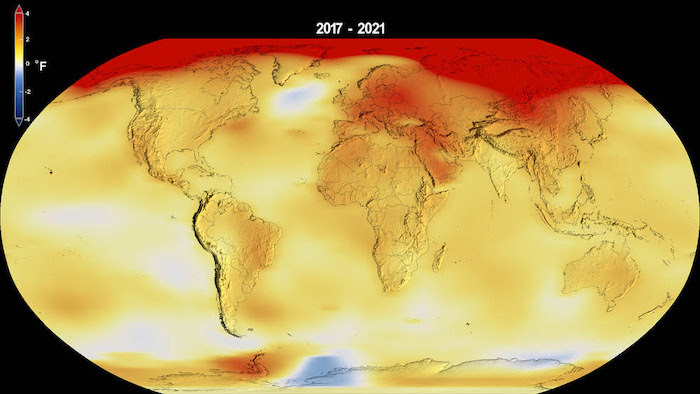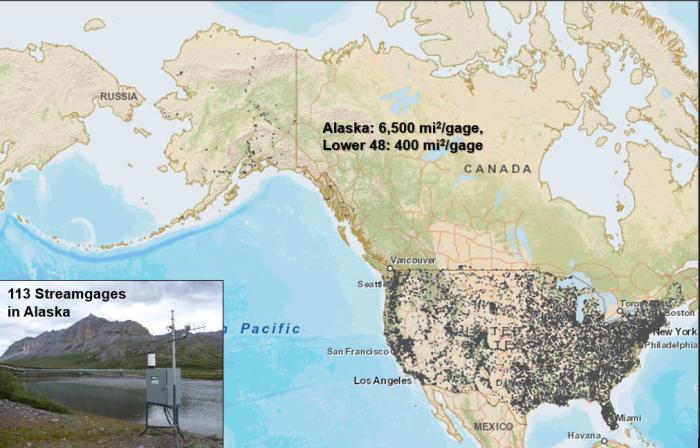By: Hazel Shapiro, Program Analyst at US Arctic Observing Network (US AON) and Interagency Arctic Research Policy Committee (IARPC); Sandra Starkweather, Executive Director, US AON; Thorsten Markus, Cryospheric Science Program Manager, NASA; and Olivia Lee, former Program Director, Arctic Observing Network Office of Polar Programs
The Arctic is warming significantly faster than the rest of the planet, with consequences for communities and ecosystems in Alaska and the global climate system. Arctic Indigenous Peoples and other northern residents are on the front lines of climate change, and all Americans are affected by Arctic change through shifting weather and climate patterns, disrupted food webs, sea-level rise, and the resulting impacts on human health and livelihoods. Despite its importance, the Arctic remains one of the most sparsely observed regions in the world, and current observing systems in the Arctic are not sufficient to adequately support decision-making.

The Interagency Arctic Research Policy Committee (IARPC) and the United States Arctic Observing Network (US AON) Board released a report to Congress on 13 December 2022 describing the need for a sustained Arctic Observing Network. This report recommends focusing on:
- Supporting coordinated, integrated, and sustained critical observations and infrastructure;
- Developing a more effective data-management system that is open, easily discoverable, accessible, and usable across observing systems;
- Building research capacity for Arctic communities to conduct and share observations that support local decision-making and developing technology to help fill gaps and reduce the costs associated with observing remote areas in a harsh environment; and
- Closing gaps in observations of the ocean, ice, atmosphere, and land, as well as observations of Arctic societal trends and built infrastructure, with a focus on supporting decision-making around climate resilience and national security.
The sustained Arctic Observing Network must build on existing efforts to monitor and understand environmental change and to inform decision-makers working at local, regional, and global scales. Sustained and enhanced Arctic observations will contribute invaluable information to global models and forecasts, national security decisions, community resilience efforts, health and well-being, and economic prosperity.
The report calls for an implementation plan to outline agency responsibilities for coordination, governance, and management of a sustained Arctic Observing Network. It recognizes that developing and implementing a sustained US Arctic Observing Network must advance the capacity for equitable engagement of Indigenous communities and Indigenous Knowledge, as appropriate, in its design and development.
This article was adapted from the December 2022 report to Congress, On the Need to Establish and Maintain a Sustained Arctic Observing Network, prepared by the US Arctic Observing Network, on behalf of the Interagency Arctic Research Policy Committee of the National Science and Technology Council. To learn more, please read the report.
About the Authors
 Hazel Shapiro is a Program Analyst for the US Arctic Observing Network and Interagency Arctic Research Policy Committee. She has a BA in Earth Sciences from Dartmouth College where she studied regional weather patterns in Denali, Alaska and a Master's in Business Administration from CU Boulder. She has worked in a variety of positions in the conservation/non-profit sector, often focused on collaborative project management.
Hazel Shapiro is a Program Analyst for the US Arctic Observing Network and Interagency Arctic Research Policy Committee. She has a BA in Earth Sciences from Dartmouth College where she studied regional weather patterns in Denali, Alaska and a Master's in Business Administration from CU Boulder. She has worked in a variety of positions in the conservation/non-profit sector, often focused on collaborative project management.
 Sandra Starkweather is Executive Director for the US Arctic Observing Network. She has a strong interest in improving the effectiveness of the Arctic research enterprise, particularly in situ observational research, through building stronger collaborations among all parties who benefit from sustained Arctic observing, from researchers through information and service end-users. Starkweather is currently pursuing a certificate in Science and Technology Policy Research to better understand and evaluate the institutional dimensions of the science-public interface.
Sandra Starkweather is Executive Director for the US Arctic Observing Network. She has a strong interest in improving the effectiveness of the Arctic research enterprise, particularly in situ observational research, through building stronger collaborations among all parties who benefit from sustained Arctic observing, from researchers through information and service end-users. Starkweather is currently pursuing a certificate in Science and Technology Policy Research to better understand and evaluate the institutional dimensions of the science-public interface.
 Thorsten Markus is the Program Manager for Cryospheric Science at NASA Headquarters in Washington, D.C. His research focuses on the development of new approaches to derive cryospheric parameters from space-borne or air-borne observations and he is working on the use of satellite-derived geophysical parameters in data analysis efforts and in data assimilation schemes to explore the role of cryospheric processes in the polar and global climate system.
Thorsten Markus is the Program Manager for Cryospheric Science at NASA Headquarters in Washington, D.C. His research focuses on the development of new approaches to derive cryospheric parameters from space-borne or air-borne observations and he is working on the use of satellite-derived geophysical parameters in data analysis efforts and in data assimilation schemes to explore the role of cryospheric processes in the polar and global climate system.
 Olivia Lee is a former Program Director for the Arctic Observing Network Office of Polar Programs. Her research focuses on the integration of community observations and remote sensing imagery of sea ice to assess walrus and ice seal habitat in northern Alaska. She also works on participatory scenarios projects that aim to broaden our understanding of the socio-economic and biophysical drivers affecting the future of the Arctic, particularly in coastal regions of Alaska. She contributes to the Sea Ice for Walrus Outlook and the Alaska Arctic Observatory and Knowledge Hub, to support coastal observing programs that take into account the interests of coastal communities in Alaska.
Olivia Lee is a former Program Director for the Arctic Observing Network Office of Polar Programs. Her research focuses on the integration of community observations and remote sensing imagery of sea ice to assess walrus and ice seal habitat in northern Alaska. She also works on participatory scenarios projects that aim to broaden our understanding of the socio-economic and biophysical drivers affecting the future of the Arctic, particularly in coastal regions of Alaska. She contributes to the Sea Ice for Walrus Outlook and the Alaska Arctic Observatory and Knowledge Hub, to support coastal observing programs that take into account the interests of coastal communities in Alaska.

